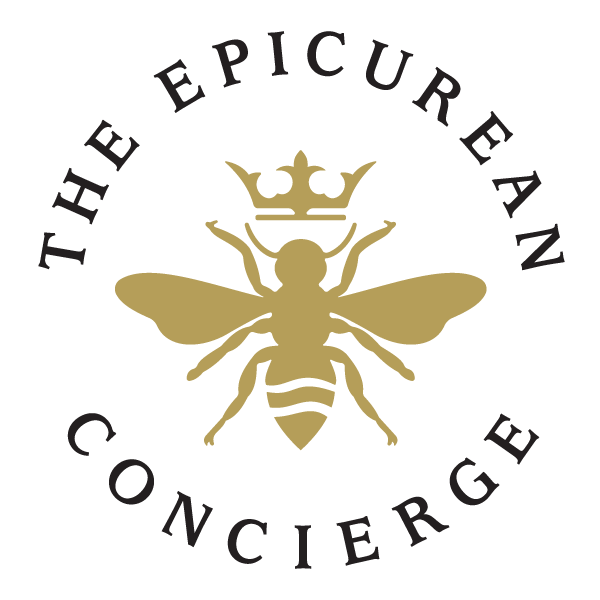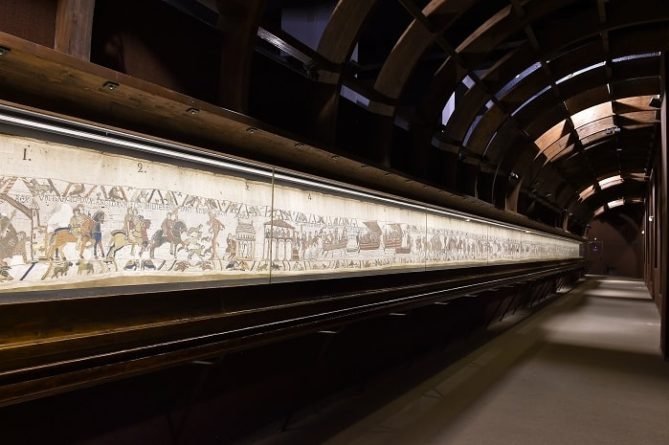Private Experiences and Tours in Normandy
Normandy is chock full of history, art, breathtaking coastline, and the peaceful countryside. We don’t understand why this beautiful region is so often viewed as a two-day stop to see only the D-day beaches and World War II cemeteries! In fact, many Parisians have long escaped the hustle and bustle of the city and retreated to Normandy.
From the stunning Mont St. Michel to the charming fishing village of Honfleur. From the beaches of Deauville to fascinating towns like Rouen, where Monet painted the cathedral…there really is something for everyone in Normandy.
Our experiences and tours are bespoke. We have several certified guides (the only ones allowed to conduct tours in museums and monuments) who have been sharing the Norman story for decades. They bring both the history and this amazing culture to life in their private tours.
Our itineraries are custom designed based on our clients’ interests and passions. Here are examples of things to do and see.
RELIGIOUS HISTORY
Mont-Saint-Michel
You will visit Mont-Saint-Michel and its bay, considered to be one of France’s most stunning sights. For centuries it was a major European pilgrimage destination. The holy island and its bay were the first to be listed on the UNESCO World Heritage Site. The Abbey of the Mont-Saint-Michel, with its medieval architecture, became a renowned center of learning, attracting some of the greatest minds in Europe.
Rouen Cathedral
The original cathedral was a Romanesque structure. But when Gothic architecture became popular, it was decided to replace the existing building with a more prestigious one to showcase the prestige of Rouen to the world (then one of the largest cities in Western Europe). Allied bombing in WWII significantly damaged the cathedral, where urgent repairs were necessary to secure the entire monument.
Church of Saint Joan of Arc
Saint Joan of Arc Church’s unique design was controversial in the city that was known for its medieval Gothic churches. The sweeping curves refer to the flame that consumed Joan of Arc on the same square in 1431. The church was inaugurated in 1979 and was listed as an historic monument in 2002. The 13 stained-glass windows inside had been removed from Saint Vincent Church to protect them from WWII bombing. Fortunately, the precautions worked, enabling the windows to have a new home in the Saint Joan of Arc Church.
Bayeux Tapestry
The Bayeux Tapestry, which is almost 70 meters, depicts 58 scenes that tell the story of how William the Conqueror became King of England in 1066. The whole museum is the tapestry wrapping around. The embroidery shows the battles in amazing detail.
ARTISANS
Cheese Making
Most famous for its Camembert, it is certainly fun to visit a Norman fromager to see how this famous cheese is produced.
Bell Foundry
The foundry, which represents a long tradition of Norman bell founders dating back to the Middle Ages, specializes in the production of bells and artistic bronzes, including those in Notre Dame de Paris. Each year the workshop, which was built in 1865, produces 100 monumental bells. See how the bells are made by these amazing artisans.
Copper Workshop
Founded in the 19th century, the workshop has been devoted exclusively to manufacturing cookware. In 1985, it was expanded, creating a shop that opened to the public to share the know-how of its craftsmen. Their products are used by some of Paris’s greatest chefs! You might have a hard time resisting a beautiful copper momento!
Calvados and Cider
The beverage of choice in Normandy is apple cider (dating back to the Middle Ages) and Calvados, and apple brandy. Learn how each is produced by visiting distilleries.
WORLD WAR II
Landing Beaches/American Cemetery
This will be a powerful day remembering the American troops who landed on Utah and Omaha Beaches on D-Day, June 6, 1944. You also will visit the Normandy American Cemetery in Colleville-sur-Mer, the first American cemetery on European soil in World War II.
The Pays d’Auge
Enjoy typical Normandy landscape and architecture, as well as local specialties. In the outskirts of the region, see a typical private manor and visit a stud farm, as horse breeding is an important industry here.
COOKING CLASSES
Cooking Class with Lunch
Your instructor’s passion for gourmet cooking started when she was a young girl, as her family owned several restaurants. She expanded her Parisian cooking classes into Normandy, a region close to her heart. When you arrive, you will begin your class, you will then enjoy a typical Norman aperitif around the fireplace or on the terrace (if the weather allows it). Your hard work will pay off with a 3-course lunch, with wine of course!
THE COASTLINE
Deauville
See why Deauville has long been considered a chic and glamorous seaside resort — an upscale holiday destination since the 1800s. Known for its grand casino, golf courses, horse races and American Film Festival, and of course its wide sandy beach, the town also has boutiques surrounded by elegant architecture.
Trouville
Trouville, originally a fishing port, was one of the first coastal resorts to be developed in France. It was a favorite of writers and artists…from Flaubert and Proust, to Monet and Boudin. See its beauty today with its glamorous buildings, a vibrant fish market, and a beautiful sandy beach with a boardwalk.
Alabaster Cliffs Walking Tour
La Côte d’Albâtre or the Alabaster Coast is an 80-mile-long stretch of coastline that runs between Étretat and Dieppe. It shares the same geology as the Dover coast. Etretat has some of the area’s most famous rock formations, like the Falaise d’Aval arch. Etretat was originally an oyster fishing village. But once the railroad was established, Parisians traveled to the coast for vacation as did the Impressionist artists and writers.
Honfleur
Located in southern Normandy on the estuary where the Seine River meets the English Channel. The old harbor, known as Vieux-Bassin, is lined with charming 16th- to 18th-century townhouses. Painters, writers and musicians have flocked to Honfleur for centuries. The market is considered to be one of the nicest in Normandy.
CLAUDE MONET - IMPRESSIONISM
Le Havre
Considered the birthplace of Impressionism, local artist Claude Monet painted the sun rising through the industrial chimneys, naming the painting “Impression, Sunrise.” This port city was almost completely rebuilt after World War II. Its unusual concrete architecture resulted in the city center being named a UNESCO World Heritage Site in 2005.
Giverny
There are two parts in Claude Monet's garden: a flower garden in front of the house and a Japanese-inspired water garden on the other side of the road. Monet did not like constrained gardens. He planted flowers according to their colors and let them grow freely. He developed a passion for botany, exchanging plants with friends and was always was looking for rare varieties. While family members took care of the house and garden after his death, the property was neglected following WWII. It wasn’t until ~30 years later that a curator and gardener decided to bring back the garden as Monet once had it. It took almost 10 years to restore the garden and the house their former state.
Museum of Fine Arts in Rouen
It is the home of France's biggest Impressionist collection outside of Paris. It also features paintings, sculptures, drawings and objects from every “school” of painting style, ranging from the 15th century to the present day.
Museum of Modern Art
MuMa contains one of France's most extensive collections of impressionist paintings. Its collection spans the past five centuries, with the impressionist painting collection being the second most extensive in France after the Orsay in Paris. There are paintings by Monet and other artists who lived and worked in Normandy, as well as paintings by Boudin (with the largest collection of his works in the world), Delacroix, Degas, Renoir, and Pissarro. Modern art, as well as an old masters section, are also on display.
LITERARY HISTORY
Villequier - Victor Hugo Museum and Statue
The museum is located in the home of the Vacquerie family, friends of Victor Hugo, one of the greatest French writers. His most famous work includes the novel Les Misérables. A Vacquerie son married one of Victor Hugo’s daughters. Later that year, the young couple drown in a boating accident just a few miles up river from the house. Near the home is a statue of Victor Hugo looking in the direction where the tragedy took place. In addition to Hugo family memorabilia, the museum also contains an important collection of Hugo's drawings.
Flaubert Family Home
The Pavillon Flaubert is all that remains of the Flaubert family home, located just outside Rouen. French writer Gustave Flaubert lived there for 35 years and wrote most of his novels there. Flaubert’s life and the inspiration for his work were mainly inspired by this house and his relatives who lived nearby. The Pavilion houses a small museum displaying objects that belonged to the author, such as writing equipment, portraits and engravings. Flaubert’s book collection is housed nearby at Canteleu town hall.
Flaubert Garden and Medical History Museum
Gustave Flaubert was born in the former Rouen hospital where his father was chief surgeon. The hospital property is now home to the Flaubert garden and Medical History Museum. The facility displays a collection of medical objects and its small enclosed garden has about 100 medicinal plants.










